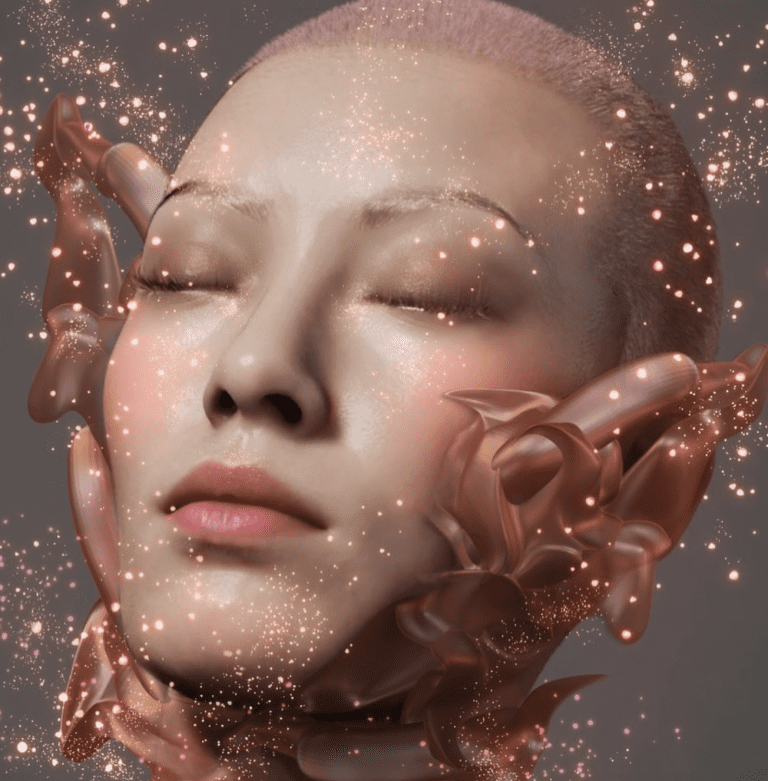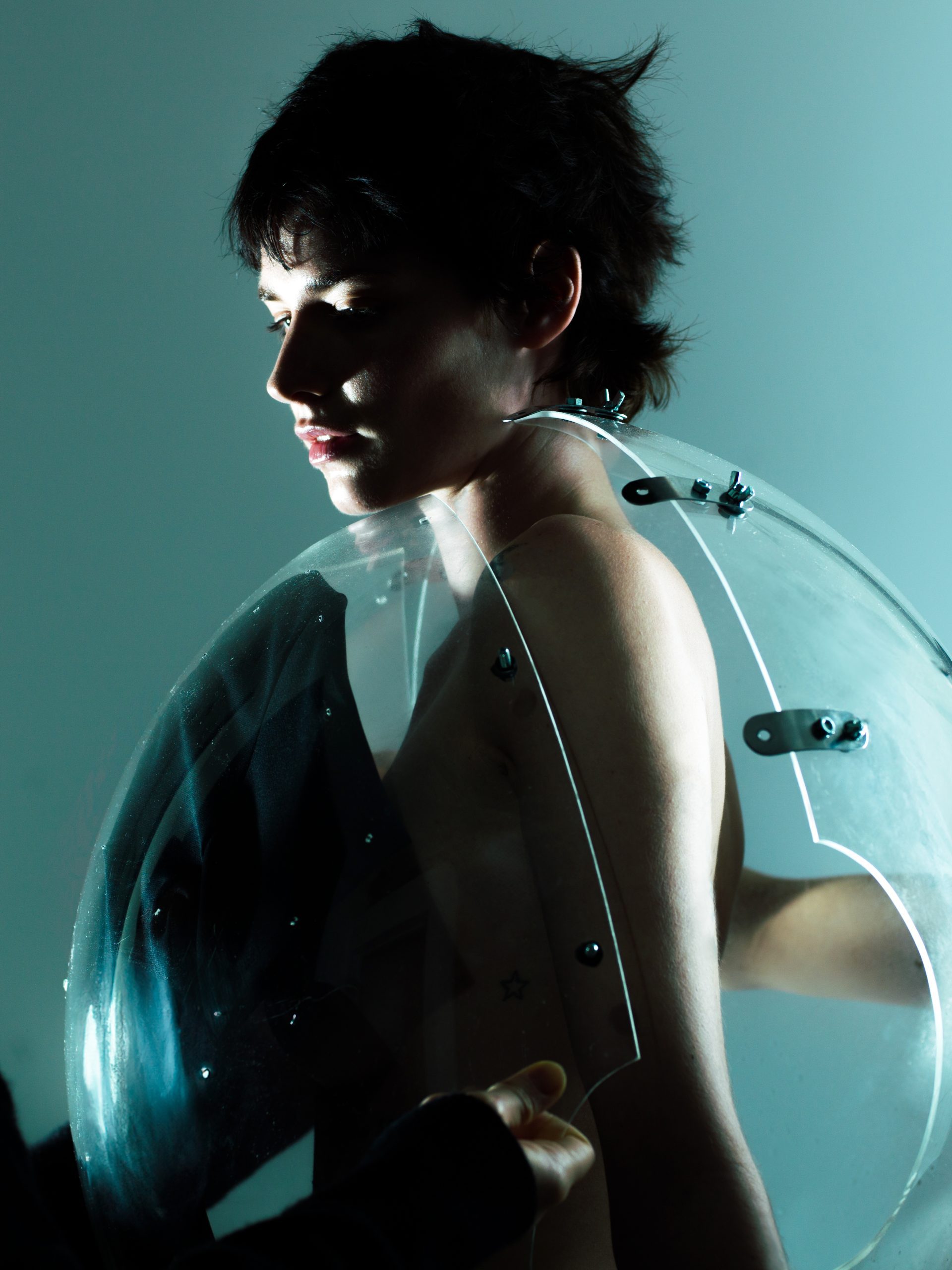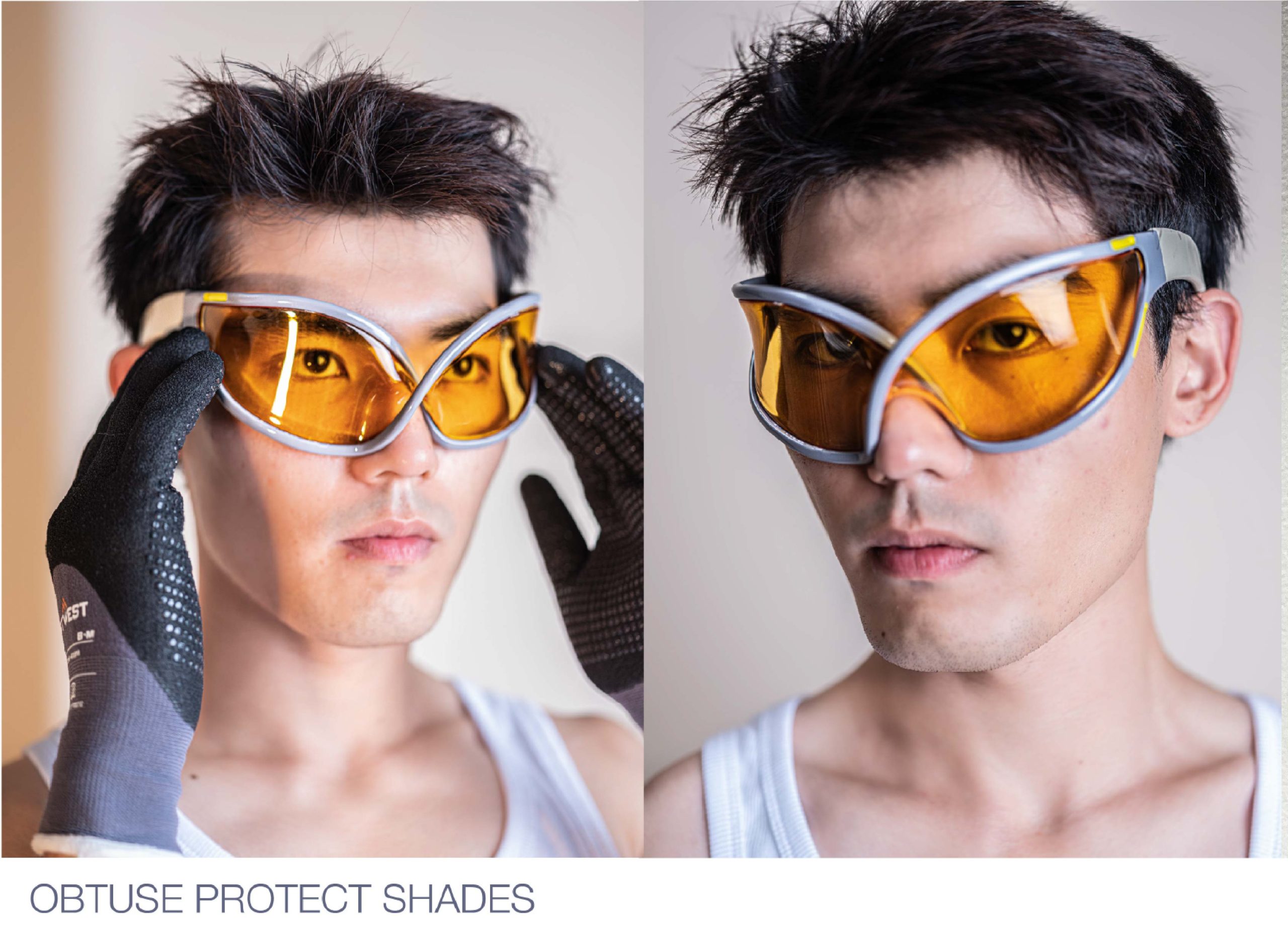While there is much debate over when phygital art first emerged, there’s no arguing the thought-provoking shift wherein the arts industry is now more than ever, daringly challenging the status quo. Bridging physical and digital art is resulting in more than just interactive art exhibits and enhanced networking between global creatives. It’s altering the worlds of fashion, art, music, gaming and live entertainment, linking them together to form an intricate web of masterful design. It’s changing the way civilians are influenced and pushing the bounds of immersivity. The term ‘phygital’, coined in 2007 by Chris Weil of Momentum Worldwide, has grown exponentially over the last decade, particularly since the dawn of the pandemic.
“The metaverse is not a replacement of the real world but an augmentation of the varied identities we already inhabit. As we create more immersive, interoperable and pandemic proof experiences in the digital space, we still believe in the transformative power of human capital. We should never underestimate the value of a firm handshake and a genuine smile across the room. The best ideas in the world begin with a simple hello,”
Loretta Chen, Co-Founder and CEO of Smobler.
A NEW USER EXPERIENCE: AR & VR
Through COVID-19 induced isolation, much of the world leant on the fibres of cellular connection. User engagement on apps like Instagram and TikTok escalated at an alarming rate which forced artists, creators and brands alike to rethink their strategy. On March 13 of 2020, The Metropolitan Museum of Art announced that it would temporarily be closing. A monumental announcement considering the MET hadn’t been closed for more than a few days over an entire century. With no one able to physically experience the museum, The Met’s digital, educational and curatorial teams partnered with multidisciplinary production company Unit9 to design ‘The Met Unframed.’ Launched in January, 2021, The Met Unframed provided art enthusiasts around the world with an interactive mobile app that allows users to digitally tour the museum. Users could engage in interactive gaming experiences, use filters and discover animated, AR versions of the museum’s paintings. Additionally in 2021, the Phygital Sustainability Expo developed a ‘Fashion Virtual Experience’. Using a VR headset, attendees could tour a fashion exhibit in Rome.
Earlier this year, Random Studio crafted a phygital lounge for global luxury fashion platform Farfetch. The immersive lounge was revealed at Art Basel Miami consisting of a LED screen surrounded space that used camera detection technology in order to showcase Farfetch imagery. Uniquely, the colour palette of the space would correlate with each visitor’s outfit. Much like a mood ring, the space would interact with each individual.
It’s a fantastically compelling time for viewers, but at GLITCH we wanted to uncover the impact of the phygital movement from the artist’s perspective. Dr. Alex Box and Ovidiu-Valeriu Bojor, are two gifted, multifaceted artists with whom we had the pleasure of connecting with in order to gain further insight.
THE PHYGITAL ART MOVEMENT THROUGH THE EYES OF DR. ALEX BOX
Dr. Alex Box is described as an Identity Designer and Beauty Futurist. Awarded honorary doctorate of The Arts from Solent University in 2011, Dr. Alex Box went on to explore the weaving of science, technology and beauty. Her multidimensional creations have led her to work with an extensive list of renowned names like Issey Miyake, Chanel, Alexander McQueen, Vivienne Westwood, Nick Knight, Paolo Roversi, Wayne McGregor, Lady Gaga and Frank Ocean, to name a few. Dr. Alex graced us with her extensive wisdom and hope for the future.
How has the merging of digital and physical worlds enhanced your projects?
“I have always seen technology as an opportunity to expand my practice. A supportive layer that evolves with each new advancement. The seamless merging of physical and digital has allowed a new textural discourse enabling creative autonomy.”
With 25 years of experience in the art, fashion, beauty and tech space, what changes have you witnessed in that time regarding technology?
“I feel extremely fortunate to be of a generation that was analogue. Watching something grow has enabled a critical overview of technology’s systems, ethics and methodologies. We stood on the land looking at the sea and learnt to swim, whilst the younger generation was born in the sea with no sight of land. Space and time, identity, communication, health, education; there isn’t anything that hasn’t been touched by technology and is too numerous to discuss here. One significant shift is in the many physical and digital identities we now have, operating in and out of our control and validated and materialised by our numerous interactions across platforms and sectors alive with data: the “prismatic self”. These commoditised selves are both communal and autonomous. The attention economy crafts an entertainment portal, a gamified existence that’s invisibly coded and monetised. Now for the good news, we are becoming increasingly aware of our value, our data as the new oil and new pollution, and we want to do something about it! We are now independent creators with a critical voice, able to utilise the technology whilst remaining aware of how it may be used. We seek antidotes to technology in ritual, earth, spirituality and human connection: “digital pagans”. We are integrating and balancing our needs. The sleepers have awoken.”
What impact do you believe this has had on the viewer’s/ consumer’s experience?
“Let’s start by repositioning the word consumer and say citizen. All consumers can do is consume, and that’s the problem. Language has created a habit, and habits have been codified and algorithmically crystalised into behaviour. A small and familiar echo chamber of targeted experience with a “more of the same” mantra has become the viewer’s experience. This system that denies organic curiosity and tangential growth is becoming tired and irrelevant. We must favour adventitious patterns, systems and experiential learning and critical thinking based in support and nature.”
Phygital Art in all forms is challenging the status quo, inspiring deeper, more explorative forms of self-expression and providing a space for the wildest manifestations of the imagination. Particularly within the beauty industry, how do you feel the Phygital movement is impacting beauty standards and self-expression?
“I think we are at the infancy of self-expression, still strongly guided and controlled by the biases inherent in the DNA of code, creator tools and AI. We are beguiled by the speed, accessibility and proficiency to produce. This still doesn’t address the fact that the sources are all the same. Whilst there has been a wider acceptance and adoption in media of physical body diversity and inclusion, it’s still on the media’s terms of commoditization as it always has been. Whilst people are becoming increasingly adventurous in their digital identities, physical standards couldn’t be more rigid, and the polarity is palpable. The exciting space for acceptance and change is in the phygital, where experience, physicality and identity become entwined. The membrane between digital and physical is becoming increasingly thin. A permeable identity undefined by hardware is on the horizon, and we will become detached from the screen. The phygital allows us to build out from the purely visual into sensorial, cerebral, and spiritual to reposition the notion of a “standardised” value system of beauty.”
What is your artistic process when it comes to creating Phygital Art?
“I’m always excited by the glitch! The bit that naively responds without consciousness, promoting curiosity and mercurial undefined existence. I’ve always been attracted to emerging processes that haven’t found their feet yet. I can play without knowledge and make wild mistakes that prompt new thought patterns and avenues of enquiry. Once I get proficient, I ultimately get a bit numb, so I look for something I don’t understand for inspiration.”
What message do you aim to drive through your work?
“Staying curious, being playful without judgement, questioning everything, helping expel binary ideas in creative definitions. I’ve known there’s no path if you’re out on your own, but hopefully I’ve bent the corn into a furrow for others to find their way a little easier.”
What are your predictions for the future of Phygital Art?
The future as the past! Ritual, connection, ancient cosmic order: a holistic immersive identity. I’m hoping for a consciousness revolution. I feel we are on the edge of a breakthrough of collective consciousness through mass adoption of psychedelics. The truth comes from the observation of nature, and we can only truly evolve by allowing old systems to compost and enable regrowth. The actualisation of integrated experiences will usher forth transformation. Allowing a new idea/ discourse of digital as fallible, fragile, and impermanent.
Intuitively ushering a reconnection of earth sewn roots, celebrations of ritual and humanity, Dr. Alex Box has a crucial and awe-inspiring take on the Phygital Revolution.
THE PHYGITAL ART MOVEMENT THROUGH THE EYES OF OVIDIU-VALERIU BOJOR
Born in Bistrita, Romania, Ovidiu-Valeriu Bojor graduated from the University of Arts and Design in Cluj-Napoca, Romania in 2018, with a BA in Visual Arts. In 2019, Bojor returned to the Institute as a resident artist. Over the years, Bojor has developed an impressive portfolio, creating his first immersive artworks, VR/AR projects and videomapping in 2020. As a creative director for Futures Factory, Ovidiu-Valeriu Bojor’s work continues to expand alongside rapidly developing technology and is certainly an artist to watch. We were lucky enough to get a peek into Bojor’s creative world.
How has the emergence of Phygital Art and Design shifted the ways in which you create?
“The emergence of Phygital Art and Design hasn’t necessarily changed the way I create. Instead, it has added new approaches to how I create or present my creations to the public. With the advent of phygital concepts, a wide range of possibilities has opened up for me as a creator, and for the audience to have an immersive experience with my creations. Starting from this premise, the creation becomes more interesting.”
What are your predictions for the future of fashion design and distribution in terms of Phygital Technology?
“I believe the way art and design products are exhibited and distributed to the public is changing in real-time, and will change significantly in the years to come in a direction where creators are challenged to come up with new approaches. The boundary between digital and physical is becoming smoother, offering a more pleasant experience for both creators and the public. I also see a sustainable aspect where some products can be tested before production. But overall, the future of phygital art and design lies in the hands of creators.”
As a creative director, what is your favourite way to utilise the merging of digital and physical worlds?
“The ability to aesthetically test a fashion product before it is physically produced is one of my favourite aspects, and I use it for my own designs. Another interesting aspect is that a digitally existing garment can easily be part of a creative campaign in the physical world using the latest software technologies. I really appreciate the contribution that software makes to the emergence and expansion of phygital art and design.”
What is your design process? And how does emerging technology assist you?
“My process is variable, and I don’t have a fixed recipe that I always follow. Creating a concept or design can happen in various ways. As for emerging technology, I am a big fan and user. From artificial intelligence, to 3D modelling software on the computer or in VR, I am familiar with all and regularly incorporate them into my creative process. For example, I can develop the seed of an idea with the help of AI. Then using AI, I can create a mood board based on the elaborated concept. After that, I can initially bring that concept to life digitally and then materialise the concept and design in the physical world using 3D printing technologies. This is just one example. New and old technologies are important and regularly used tools in my creative process.”
What message do you aim to drive through your work?
“Work in design and creative direction doesn’t necessarily convey messages or definitions. I explore and create what I would like to see in the world. More specific messages are found in the realm of visual art when the creation is purely artistic, and interpretation is subjective based on the person interacting with what I create.”
What is your advice to emerging designers?
“Creating what you want to see in the world is the best advice I could give to any designer. Be a keen observer of the world, but pay close attention to yourself and what you want to contribute to this world. Inside you is the source of innovation and evolution.”
Ovidiu-Valeriu Bojor is an innovative designer and artist making use of old and new technologies. At GLITCH, we’re excited to see what Ovidiu-Valeriu Bojor creates next.
Distinctly expressed by both artistic minds, is the concept that the power generated from the merging of digital and physical worlds is influenced and moulded by the hands of the creator. The question is not what the phygital movement will become, but what we as the artist or viewer will make it.
Written by Ashley Jade Callahan





